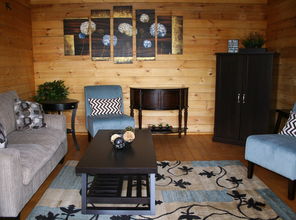Title: Mastering the Art of Architectural Equipment Translation: Enhancing Communication for Global Construction Projects
As a seasoned building designer, I often find myself delving into the realm of technical communication, where understanding and conveying the precise usage of architectural equipment is crucial. In this digital age, language barriers can pose significant challenges in ensuring seamless collaboration among international teams. This essay will delve into the intricacies of translating equipment terminology into English, thus enabling effective communication in the construction industry.
Firstly, let's clarify that architectural equipment refers to specialized tools, machines, and systems used in the design, construction, and maintenance of buildings. These can range from heavy machinery like cranes and excavators to smaller devices like pumps, ventilation systems, or fire protection appliances. Translating these terms accurately requires not only a grasp of their functional aspects but also the cultural context they carry.
1、Standardized Terminology: The International Organization for Standardization (ISO) and other industry bodies provide standardized dictionaries for technical translations. Using these sources ensures consistency across different projects and jurisdictions. For instance, "crane" in English is "crane" globally, while "heater" remains "heater" regardless of the source language.

2、Contextual Understanding: Every piece of equipment has its specific operational context. A simple term like "fire extinguisher" can have different meanings depending on whether it's referring to a portable unit, a fixed system, or an emergency response protocol. Therefore, it's essential to understand the intended function and environment before translating.
3、Technical Specifications: When dealing with complex equipment, detailed specifications must be translated accurately. This includes data such as dimensions, power ratings, and safety instructions. Any misinterpretation could lead to faulty installations or equipment failure.
4、idiomatic expressions: English, like many languages, has idiomatic expressions that convey specific concepts in the context of construction. For example, "hit the nail on the head" for a perfect installation or "fit like a glove" for seamless integration. Translating these requires a deep understanding of colloquialisms and cultural references.
5、Cultural Adaptation: While translating equipment names, it's also important to consider the cultural nuances they may carry. For example, some tools might have symbolic or spiritual significance in certain cultures, and their translation should respect these cultural contexts.
6、Regular Updates: As the construction industry evolves, new equipment and technologies emerge regularly. It's essential to stay updated with the latest terminology and ensure accurate translations in all project documents.
In conclusion, as an architect, my proficiency in translating equipment terms into English not only facilitates clear communication but also contributes to the overall success of a project. By adhering to established standards, understanding context, and respecting cultural nuances, we can overcome the language barrier and harness the full potential of our global team.
To sum up, the correct usage of English for architectural equipment involves a combination of knowledge, precision, and cultural sensitivity. This is an essential skill for any professional in the field, ensuring that the right tools and systems are effectively communicated and implemented worldwide.











